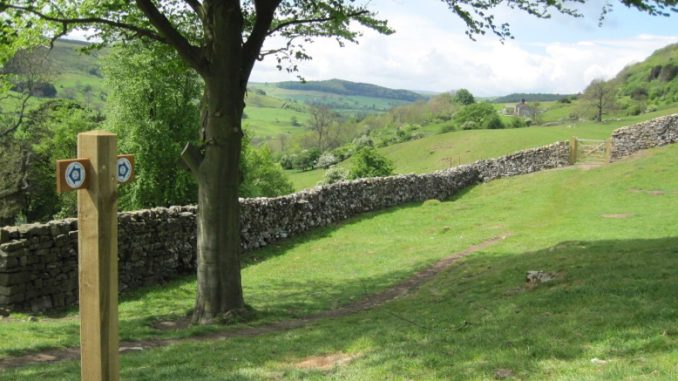
Natural England is considering numerous changes to its Coast to Coast blueprint to make it a National Trail, including a potential complementary route for cyclists and horse riders, after being threatened with a legal challenge.
While revised proposals, including some suggestions from riders and cyclists, for the route could be put before ministers for signing off within weeks, many other interested parties such as landowners have been left infuriated by a lack of consultation about exactly where the estimated 6,000 people following the route annually should be directed.
Alfred Wainwright’s original 1973 St Bees to Robin Hood’s Bay route uses a network of public footpaths, permissive paths and access land to cross villages and the Lake District, Yorkshire Dales and North York Moors national parks.
Last August it was announced the public body, which is sponsored by the Department for Environment, Food and Rural Affairs, would receive more than £5m to upgrade the walk and for path maintenance, signposting and promotion.
However, the British Horse Society and Cycling UK threatened a legal challenge in a judicial review to Natural England for its “failure to consider the route as multi-user” and for not consulting them on the proposal.
As a result, Natural England agreed to hold several discussions with cycling and riding bodies along the route, for which it is hoped up to a third of the signage will be completed this year, well ahead of the official launch of the National Trail in 2025.
Members of the North York Moors National Park local access forum, including George Winn-Darley, who runs the 7,000-acre Spaunton Moor estate, said there had also been a “massive lack of consultation” with landowners and managers.
He said a “faceless, nameless team” at Natural England had suggested the Coast to Coast route should run through sensitive areas, such as peatlands, when the existing route avoided them and miss key heritage features which Wainwright’s took in.
Mr Winn-Darley said: “It seems to be an extraordinary level of incompetence. Natural England have pressed ahead with a proposed route without actually having spoken to anybody at all. It’s way short of the standards that are needed on this.
“The decision-makers are sat in ivory towers making these decisions without reference to anybody except their personal agendas.”
He said the body had come up with dramatic changes to the route in places without having even spoken to their Natural England colleagues about the impacts on designated protected areas.
Meanwhile, discussions between Natural England, the Department for Transport and National Highways over whether a bridge should be built over the A19 to minimise diversions from the existing route are ongoing.
Insiders say while the cost of the bridge is looking “eye-watering”, could take years to complete, and could not take cyclists or riders, there is a preference at Natural England towards building it.
Alternative routes to reach Ingleby Arncliffe include using the A172 bridge beside the Cleveland Tontine hotel, which would mean a diversion of less than two miles.
Mr Winn-Darley said the bridge was unnecessary and the money being spent on it could benefit far more people if it was spent elsewhere.
Catriona Cook, of the British Horse Society, said it appeared Natural England had railroaded through a decision set to benefit Rishi Sunak’s constituency without properly considering its impacts.
She added while horse riders were the most vulnerable road user they had been overlooked.
Ms Cook said: “The way Natural England have handled it is atrocious. We shouldn’t let them get away with this sloppy way of proceeding.”
She added in upsetting both user groups and landowners, Natural England had managed to get interests that were usually in opposition to be on the same side.
She said: “It astounds me that our whole civilisation was built on the back of a horse, and yet it’s been completely forgotten. It’s if we spoke a different language we were all Chinese or something.”
A Natural England spokesperson said it was working to ensure local communities benefit as much as possible from the Coast to Coast route becoming a new National Trail.
They added: “While the route was conceived by Wainwright as a walking path, half of the route identified by Natural England already has cycling and or riding rights along it, and we have already proposed some improvements to these.
“Natural England is discussing with Cycling UK and the British Horse Society their proposals for a possible complementary Riders Route and will share these with other key stakeholders for their views ahead of the upcoming accessibility audit.”.


Be the first to comment